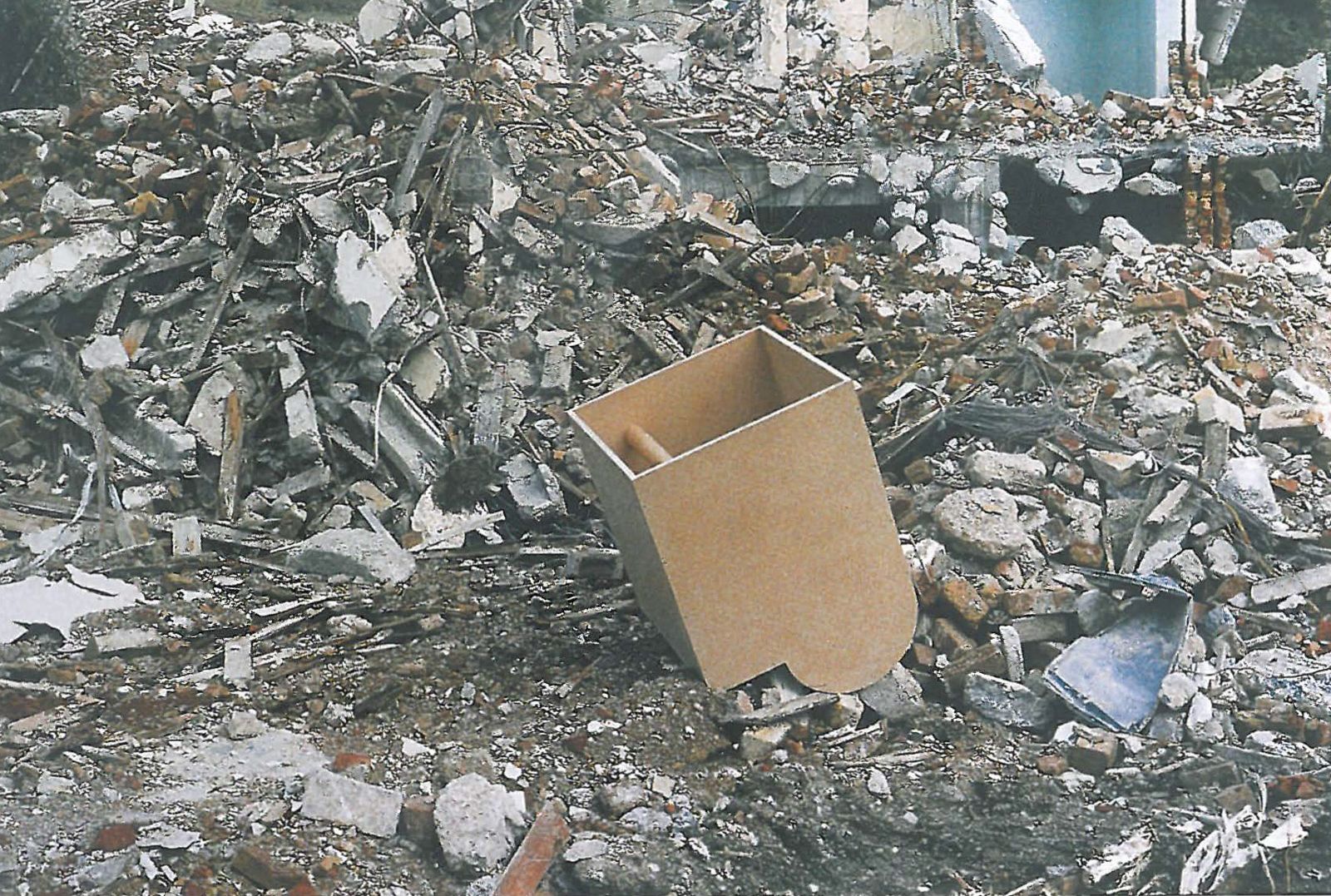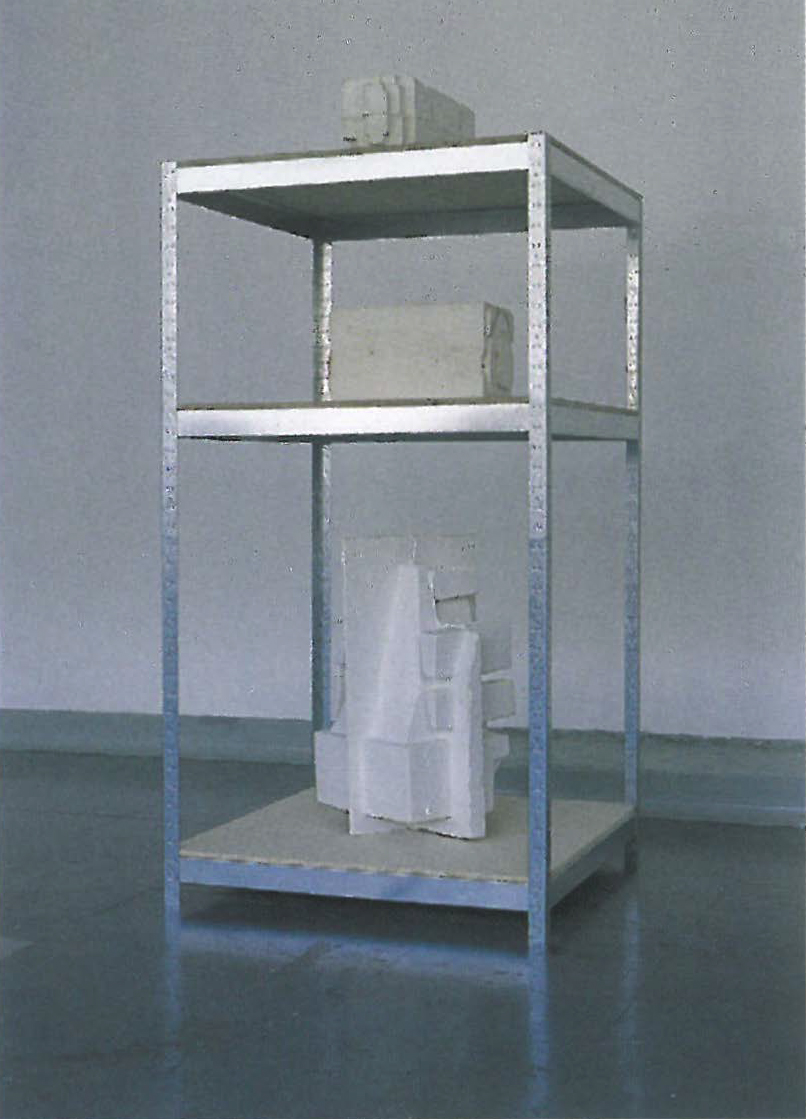
Vacant Space is the second exhibition at a new artist-run gallery, INFLIGHT at Letitia St studios, North Hobart. It promises to be an exciting new addition to Tasmania's growing contemporary art scene and to the list of artist-run spaces nationally.
Vacant Space is a selection of Anthony Johnson's sculptural objects that permeate the accidental and contingent spaces formed both between categories of, and interactions with, built objects.
The word EXPO, in bold red letters on the gallery windows allude to 'state-of-the-art, worlds-best-practice' trade fairs, blatantly contrasting with its low-tech, D.I.Y. construction. Although this may seem like a critique of idealism, the imperatives of Ludditism don't fit Johnson's approach. Rather he is locating his work within a field, finding the coordinates of a space in which to operate, however transient that might be.
The spaces that he evokes are the environments, 'removed from the public domain& Warehouses, airports, cargo yards, construction sites and storage areas', an urban vacancy, where there's no time to stop and look. The 'non-place', as Johnson refers to it, is charged with the psychology of solipsism. 'It symbolises the phenomena of being nowhere yet everywhere, provoking the experience of feeling nothing yet everything.'
'Uselessness' was Oscar Wilde's defining prerequisite for art, and perhaps some of that aesthetic inheritance shows through in Johnson's work. Expo (Wagen) lying somewhere in between known useful objects, is made of MDF. Board and suggests something for storage or a trolley, or perhaps a casing to house a machine. It is displayed on a platform as a kind of diorama of artificial grass and artificial earth, looking as though the D.I.Y. creator has misread the assembly manual, producing a puzzling hybrid. Expo (Wagen) has had many incarnations, as Johnson has documented its presence at various locations and even discussed the finer points of its construction with hardware sales staff, (which probably made their week!). The photographs of the adventures of Expo (Wagen) make it the protagonist in a narrative but it becomes the sticking point that undermines the flow, even as it tries to disguise itself within it.
Object lesson is a series of digital ink-jet prints of the artist constructing and dismantling a rough box-like 'shelter'. But it is also part of a performance enacted prior to the exhibition. In terms of narrative it has a Beckett-like sense of futility. The construction of this space is necessary but its relationship to the room it is in and the materials used suggest another attempt at disguise, in a camouflage of banality.

Disguise and impurity mark the play of oppositions in a group of three, more conventional-looking sculptures entitled Standards. These use plaster casts of polystyrene packaging. Our attention shifts from what the packaging protects to the curious spaces that would normally be invisible, in between the outside profile of the packaging and the box that would complete the package. Each one of these works sits on its own shelf, in a D.I.Y. shelving unit. As the plaster is similar in colour to polystyrene, at first glance, they look heavy because they are presented on a steel shelving unit, a shelf to each work. But what might seem tongue-in-cheek preciousness changes to a balancing act between what is in fact heavy solid plaster on a surprisingly flimsy framework. As positive objects, rather than mere filling, their enigmatic shapes allow the imagination free rein to contract and expand the space they suggest. They could be maquettes for modernist architecture or sci-fi spacecraft.
All these works act as punctuation in a continuum. Johnson deliberately refuses to limit their boundaries and that's precisely why they arrest attention. Johnson's art makes us contemplate the possible invisibility of subjective contingent experience. That it might be nothing, or all there is.












